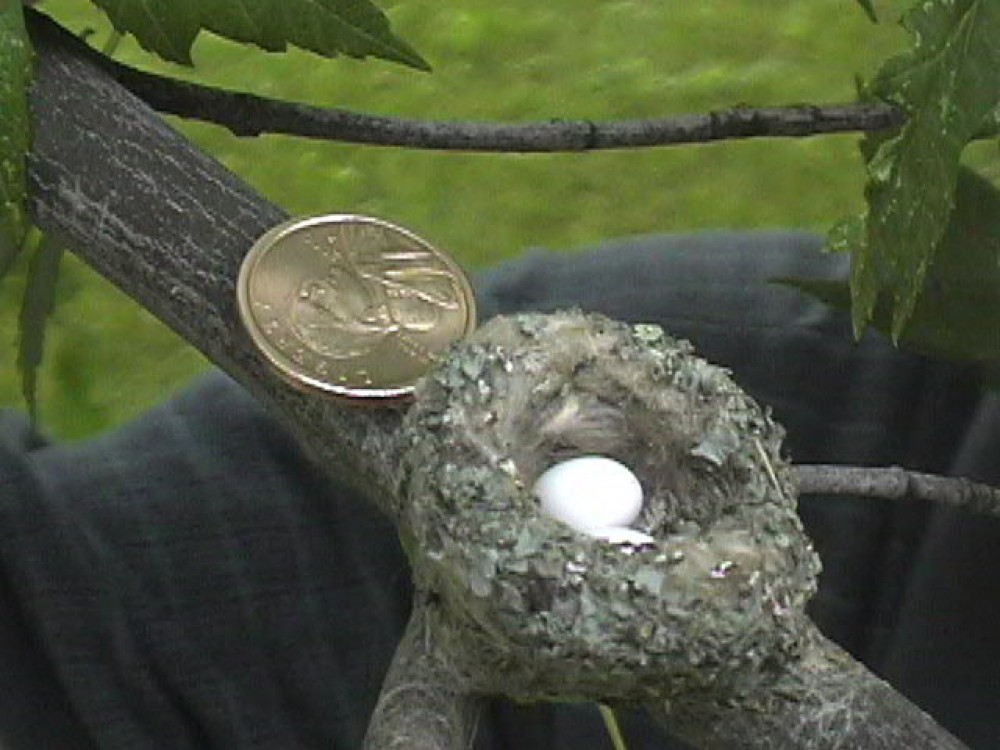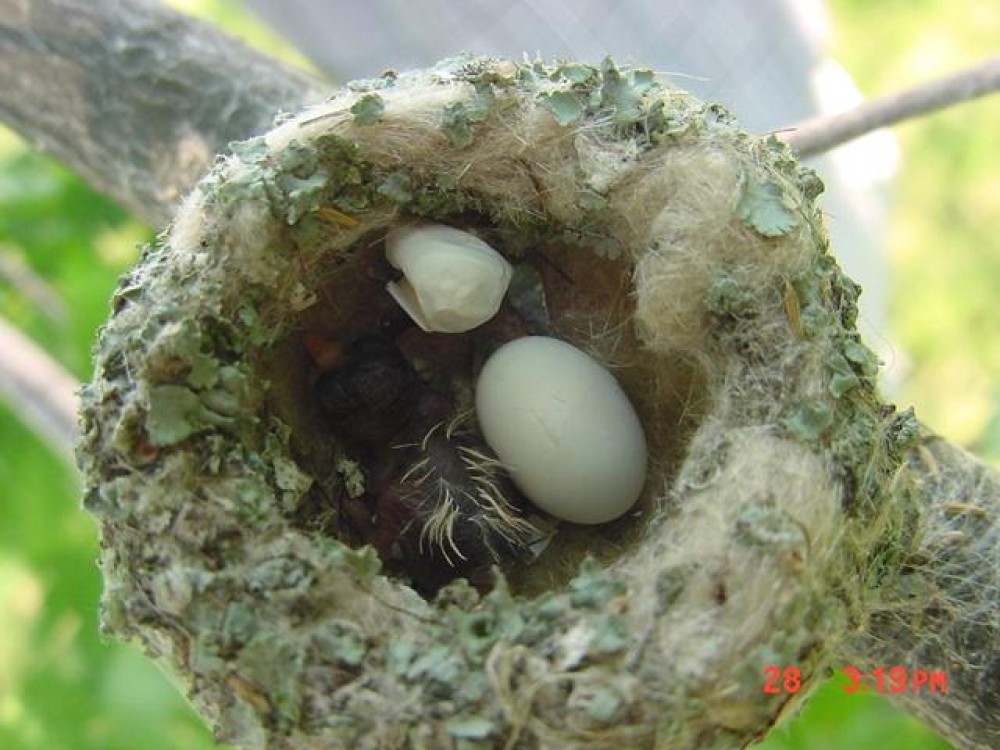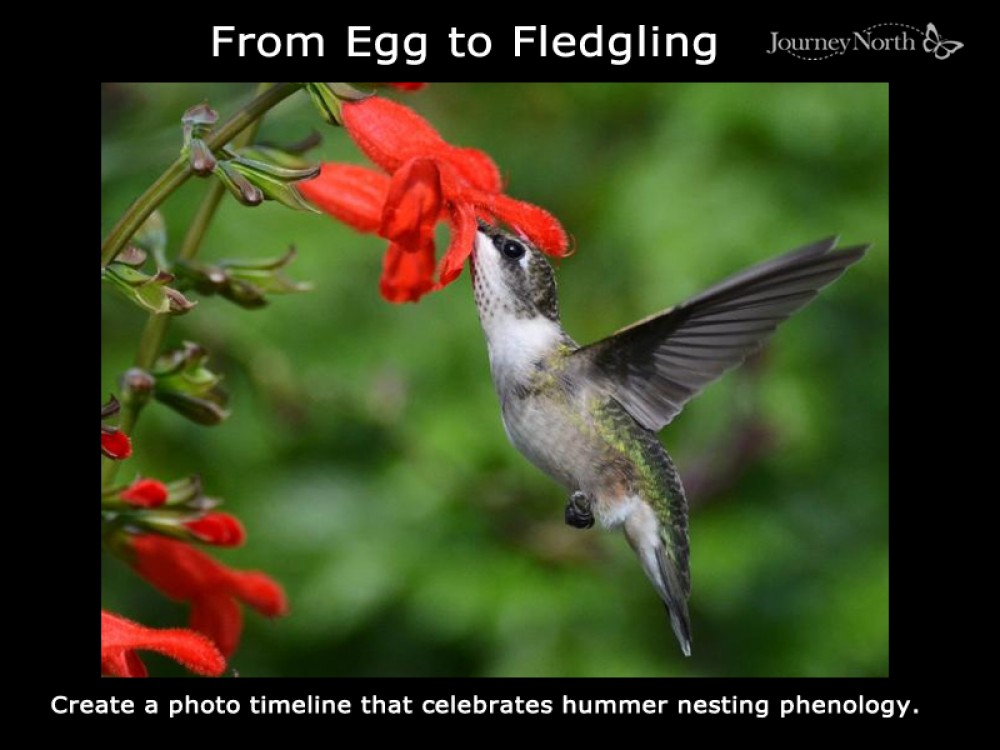Nesting Phenology
Each year when Ruby-throated hummingbirds migrate north, they arrive on the breeding grounds with one main focus—producing a successful new generation. This involves several critical steps.

Territorial Defense: 3-4 months
While both sexes can be seen chasing away others from feeders and flowers, male hummingbirds devote more energy and time to territorial defense than females do. Although a male does not share the responsibilities for nesting and raising babies, his work in keeping other hummers off the territory is very important to ensure that the babies will have enough food.

Nest Building: 5 - 10 days
Each female selects the nest site, gathers the nesting materials, and builds the nest entirely on her own. In southern areas where hummingbirds nest two or sometimes, though rarely, three times in a season, the female might reuse a nest for her second brood. Photo by Dorothy Edgington

Egg Laying: 1-3 days
The female lays 2 eggs. The second egg is laid 1 - 3 days after the first. Each egg weighs roughly 0.5 grams. Adult females weigh about 2.5 - 6 grams. Most breeding females are somewhere in between. The extreme weights usually happen just before migration, when the birds are very fat, and after long, exhausting migration flights. Photo Dorothy Edgington

Incubating Eggs: 12 - 14 days
The female begins incubating as soon as the first egg is laid. She is responsible for all the incubating. She sits on the eggs all through the night, and about 75% of the time during the day. Photo Dorothy Edgington

Brooding and Feeding Nestlings: 18 - 25 days
Immediately after the first baby hatches, she will incubate about 86% of the time during daylight. As they require more and more food, she broods them less and less. When she leaves the nest to forage, she collects nectar, pollen, and tiny insects in her crop. When she returns to the nest, she regurgitates the energy-rich slurry into the mouths of the nestlings. By the 3rd day after hatch, the chicks have doubled their mass, which doubles again by day five and again by day eight. Photo by Dorothy Edgington

Taking Care of Fledglings: 4 - 7 days
Once the young fledge from the nest, they may associate with their mother for up to a week, and she continues to feed them during this time. When they leave the nest, babies are generally much heavier than their mother. The babies lose weight until they get good at feeding themselves. Photo by Ed Thompson

